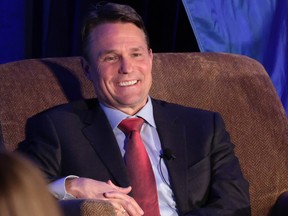All people talks in regards to the “gig economic system,” nevertheless it’s notoriously laborious to outline or tally.
The Bureau of Labor Statistics, the official supply of U.S. workforce statistics, “doesn’t have a definition of the gig economic system or gig employees,” it stated in a 2019 weblog put up, and as a substitute works to rely up constituent classes like unbiased contractors, on-call employees, contingent and momentary employees and “electronically mediated employees” (i.e., those that discover work although apps like Uber and DoorDash).
If there’s one theme that ties this various and rising phase of the labor power collectively, it’s a basic lack of entry to the varieties of advantages that many full-time workers take with no consideration, like medical insurance, paid break day and retirement fund contributions.
“I’d say the cracks are displaying in our profit system,” says Noah Lang, CEO of Stride, an organization that gives instruments to assist unbiased employees handle medical insurance, taxes, financial savings and different points of their monetary lives.
The place gig employees fall quick on advantages
Staff select gig work for a variety of causes, some for lack of entry to full-time jobs and others as a result of they like the pliability of unbiased work. Some work a number of gigs. Regardless of the impetus, Lang says, “there’s all of this monetary insecurity that comes together with it, simply because these persons are indifferent from the advantages system that is been constructed on this nation.”
Nerd out on investing information
A NerdWallet account is the neatest solution to see the most recent monetary information and what it means to your pockets.

Stride performed a survey with Mastercard, launched this week, that discovered that 75% of unbiased employees surveyed don’t obtain any sort of employer profit contributions; 92% of them reported that they obtain no health-specific well being contributions.
Stride’s survey included unbiased “1099” employees (1099 is a tax kind that exhibits nonwage earnings, frequent amongst unbiased employees) and a few “W-2” employees who’ve formal employment however have little in the best way of formal advantages. In whole, 1,981 respondents had been surveyed.
Amongst all respondents, these had been the “most desired” advantages contributions:
-
Medical insurance (28%).
-
Paid break day (27%).
-
Retirement financial savings (20%).
The shortage of paid break day (PTO) and the unpredictability of earnings movement leads many within the gig economic system to work virtually continuous: 27% stated they not often or by no means take break day. “I feel it is fairly scary that you simply had practically a 3rd of those of us who not often or by no means take scheduled break day. They don’t seem to be taking trip,” Lang says. “Lack of PTO is a really type of acute instance of this broader sense of economic insecurity that comes with” unbiased work.
Gig employees have problem saving
That monetary insecurity extends to saving, the survey discovered. Six out of 10 respondents stated they will’t at all times cowl month-to-month bills with their job earnings alone. Amongst respondents, these had been the main choices for overlaying month-to-month shortfalls (respondents might select multiple possibility):
-
Different earnings sources (29%).
-
Financial savings (26%).
-
Flip to bank cards (24%).
Not surprisingly, financial savings objectives might be laborious to succeed in with gig work. The 1099 employees surveyed discovered most of these saving “extraordinarily” or “very” difficult:
-
Saving for retirement (59%).
-
Budgeting for big bills (50%).
-
Managing unexpected bills (50%).
Within the survey, financial savings objectives diverse with age, with “shopping for a automobile” the no. 1 objective amongst ages 18-25; “establishing an emergency fund” no. 1 amongst these 26-35; and “retirement stability” first amongst these ages 36 and up.
Lang says he sees some giant firms that use unbiased employees making strikes to assist these contributors by offering entry to monetary instruments and, typically, with financial savings or healthcare contributions. He additionally sees some motion on the coverage entrance. General, although, these employees stay grossly underserved, and a few are organizing for higher pay and advantages.
Gig work is a rising a part of the economic system
App-based employees, like rideshare and supply drivers, could be the most seen phase of the gig economic system, however Lang says they comprise solely about 9% of gig employees. Different segments embody on-call nurses and different well being care employees, actual property brokers, musicians and different creators, in addition to freelancers of all stripes.
Whereas BLS has up to now declined to place a single quantity on the gig economic system, others have taken a stab. Upwork, a market for the companies of unbiased employees, put the quantity at 64 million Individuals in a December 2023 examine — 38% of the U.S. workforce. Consulting agency McKinsey & Firm pegged it at 58 million in a 2022 examine, or 36% of the employed inhabitants. In a parallel examine it performed in 2016, the estimate was 27% of the workforce.
Gig work has been on the upswing for a very long time, however bought a visual bump throughout the pandemic, with its elevated supply demand and shift to at-home work. “When the pandemic hit, you had a pair issues occur, proper? You had of us shift to do business from home and more and more untether themselves from [traditional] work,” Lang says. “Plus, you had way more fungibility of labor, proper? Folks might go get a job some place else. … It wasn’t a brand new development, nevertheless it accelerated a development that already existed, whereas we additionally grew to become extra reliant on gig companies.”
The gig workforce is various, Lang says: “Some working full time, some placing collectively a number of jobs, some utilizing it as a solution to high off their earnings stream,” he says. “However we’re nonetheless dwelling, you already know, on this world the place the profit system was created within the late ‘40s, when [many workers] had one job for the remainder of their lives. My grandparents did. And now you are seeing a world the place the common American, even in full-time employment, has 12-plus jobs of their life.”
Even past momentary employees, Lang says, a advantages system totally tied to employment is making much less and fewer sense, as employees transfer from job to job or patch collectively a number of gigs. We’re more and more seeing, Lang says, “a hardworking phase of the U.S. labor power that does not get entry to advantages and [has to] determine it out on their very own.”
(Picture by Mario Tama/Getty Photos)




